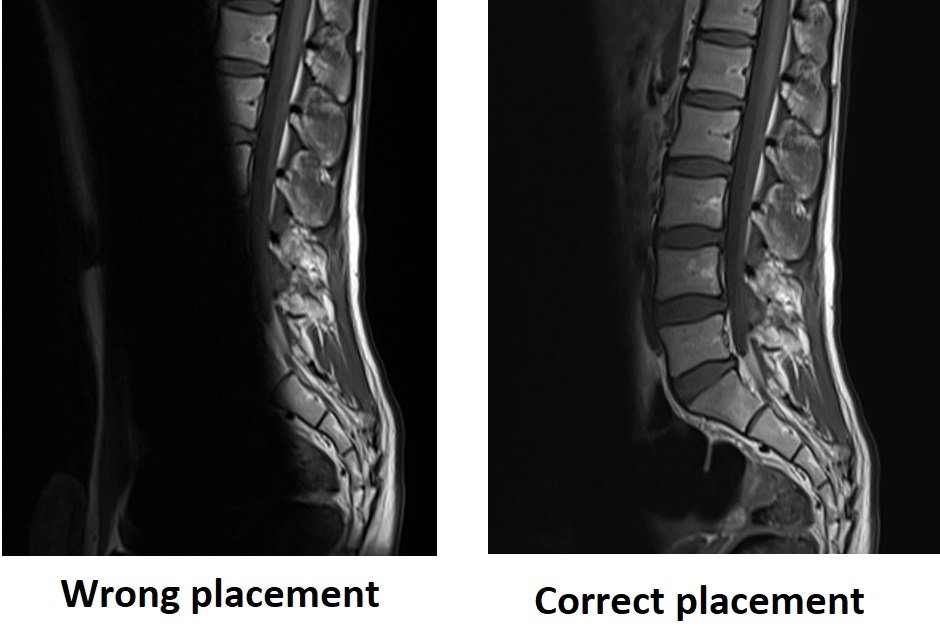Saturation Band Related Artifacts
MRI saturation bands are radiofrequency (RF) pulses applied to suppress or nullify the signal from certain tissues or regions in an MRI scan. They are used to reduce unwanted signals, such as fat or flowing blood, which can cause artifacts and degrade image quality. However, saturation bands themselves can sometimes introduce artifacts in the resulting images. Here are a few common artifacts associated with saturation bands and some possible remedies:
Signal Loss Artifact:
- Cause: Placing the saturation band too close to the region of interest (ROI) can result in signal loss in the desired area.
- Remedy: Ensure that the saturation band is positioned far enough away from the ROI to avoid unintentional signal suppression. Adjust the positioning and width of the saturation band to minimize signal loss while still achieving the desired nulling effect

Aliasing Artifact:
- Cause: If the saturation band is not wide enough to cover the entire region of interest, leading to signal wrapping around and appearing on the opposite side.
- Remedy: Increase the width of the saturation band to cover the entire FOVor additional saturation bands can be applied strategically to cover the entire region. This will prevent aliasing artifacts by effectively saturating or nulling the signals from outside the desired region.

References:
- Cho, Zang-Hee, Chang-Ki Kang, and Joon-Yong Han. “Artifacts Caused by the Incorrect Placement of Saturation Bands in MR Imaging: Experimental and Clinical Findings.” American Journal of Neuroradiology 16.9 (1995): 1807-1813.
- Lee, Eun-Kee, Myung-Jin Lee, Jin Wook Chung, and Jae-Hong Park. “Artifacts Caused by Incorrect Placement of Saturation Bands in Abdominal Magnetic Resonance Imaging: Comparison of Six Different Pulse Sequences.” Korean Journal of Radiology 10.5 (2009): 431-438.


